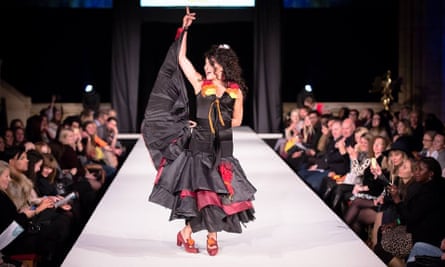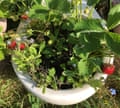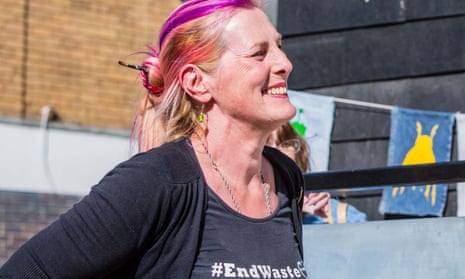Many people think waste is smelly, rotten and useless. But Cat Fletcher, the self-styled “resource goddess”, doesn’t see it that way. In fact, she’s keen to get her hands on it. “To me there’s no such thing as waste – there’s just stuff in the wrong place,” she says. Fletcher, who runs several reuse programmes in Brighton and whose own home has “absolutely nothing new in it”, says we all need to reuse old things. And she says every business and council should employ someone like her to help them do it.
Fletcher, 55, founded Freegle UK, where thousands of people give their old things away online. “It’s a lovely social activity,” she says. For example, if you’re giving away a tennis racquet you might meet someone else who plays tennis. She also built the award-winning Waste House, along with architect Duncan Baker-Brown, on the University of Brighton’s campus in 2014. The house is filled with repurposed rubbish, such as old duvets, cut-off jeans and CDs. And it looks surprisingly stylish, too.
On top of that, Fletcher is the first reuse manager for Brighton and Hove city council, meaning she is called in during building renovations to sift through leftover scraps and redistribute them to local businesses and charities.
The work is “never-ending” because there’s “too much stuff in the world”, Fletcher says. We throw away at least 3.5m tons of plastic and other solid waste a day, World Bank research shows. And the urgent need to better manage our waste was addressed last month by the Waste to Wealth summit, developed by the Prince of Wales.
For Fletcher, waste has always been a passion. A former psychiatric nurse, she moved to the UK at the age of 29, after marrying a man from Brighton. When she arrived in Britain, Fletcher was “horrified” that there was no kerbside recycling. Taking matters into her own hands, she drove around in a van, picking up empty bottles and cans from her new friends and neighbours every week. “They thought I was this wacky girl from Australia,” she says. “But they indulged me.”
As teenagers, her son and twin daughters found her love of waste annoying, but travelling changed their minds. “They’d be in paradise in Vietnam or somewhere and they saw these beautiful pristine landscapes covered in plastic,” she says.
Attitudes towards waste have started to change. Last year, David Attenborough called for the world to cut back on its use of plastic in order to protect oceans. His Blue Planet series showed millions of viewers the horrific damage plastics are doing to marine wildlife.
Fletcher is optimistic we can change our attitudes towards other rubbish, and get people to make better use of it. When the Waste House was first built four years ago people thought it was “a bit novel and a bit weird”, but now she thinks they are starting to get it.
Despite the progress, there’s still much more we can do with our rubbish. “There’s only so many resources in the world and we’ve used so many of them already,” Fletcher says. “This isn’t about being a hippy. It’s logical – we need to reuse our stuff.”

Fletcher’s upcycling inventions
Wear your broken umbrellas. “Fast fashion is so last century,” Fletcher says. Instead of buying a cheap T-shirt, which exploits cheap or free labour and damages the environment, Fletcher says we should “look at waste as a resource and think about how you can re-apply that material”. For example, she has used broken umbrellas as fabric for dresses.
Make tables and chairs out of videotapes. “You just glue them together and make the shapes you want. Tapes have quite a lot of structural strength. There’s different plastics inside a video tape and there’s often some metal in there.”
Upcycle your plastic bottles. The equivalent of a truckload of plastic enters our oceans every single minute. As well as recycling, there are lots of ways to reuse bottles. From making colourful sculptures, to collecting lids and using them to decorate, or even making Christmas trees and wreaths.

Grow strawberries in an old toilet. “They’re perfect because they stop them from hanging too close to the soil. If you grow strawberries in the toilet they naturally grow outside the seat,” she says. She has also turned old filing cabinets into plant boxes take out the doors and put it on its back, Fletcher says. “Line it with plastic, fill it with soil and it makes a great planter.”
